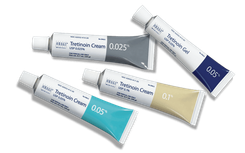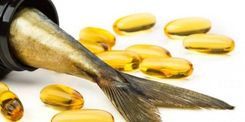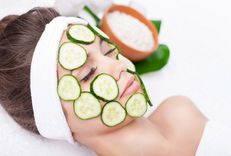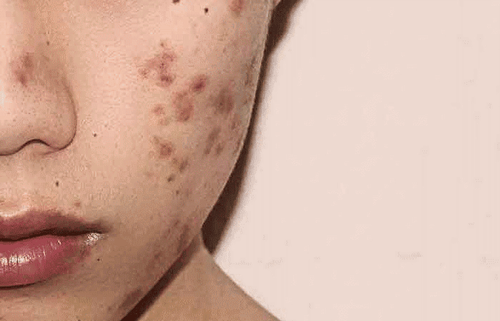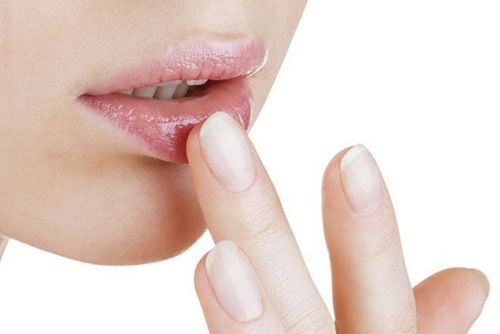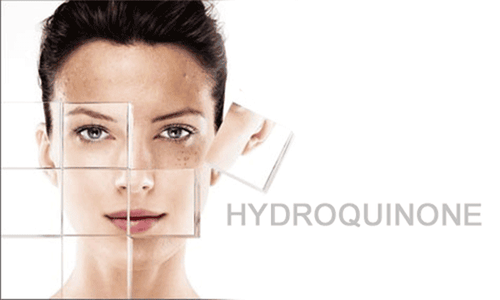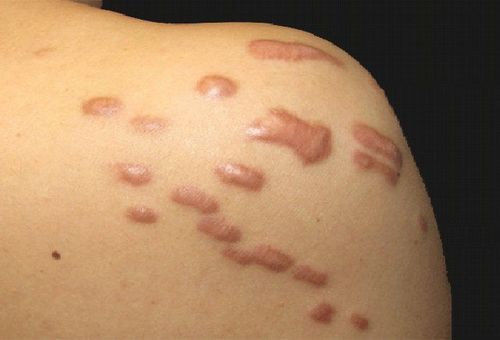Melasma and freckles are signs of hyperpigmentation. Although they can be caused by various factors such as sun exposure, hormonal imbalances, inflammation, and genetics, diet also plays a role in preventing and reducing hyperpigmentation. Therefore, what to eat to treat melasma and freckles is a concern for many women who are constantly searching for foods that are good for the skin and reduce pigmentation issues.
1. How is Diet Related to Melasma and Freckles on the Skin?
Can diet affect the skin and the appearance of melasma and freckles? These are questions that many people with hyperpigmentation wonder about.
The answer is yes. For a good reason, the skin is considered the largest organ in the body—it covers all the other parts inside. When you eat, a large amount of nutrients nourishes the skin cells. This means that if you consume nutrient-poor foods, your skin will receive low-quality nutrition for growth and recovery. Similarly, nutrient-rich foods high in vitamins, zinc, calcium, magnesium, and manganese will provide the skin with high-quality energy to function. Therefore, diet plays an important role in overall skin health.
A healthy diet for bright skin is one that is full of nutrients beneficial to the skin. Beautiful skin must be made up of healthy, elastic, and vibrant skin cells continuously supplied with high-quality nutrition. If you maintain a nutrient-deficient diet, your skin cells will soon be starved and start to dull, age, and lose vitality. Some of the best foods for smooth, glowing skin are green vegetables, fatty fish like salmon, strawberries, broccoli, and citrus fruits rich in vitamin C.
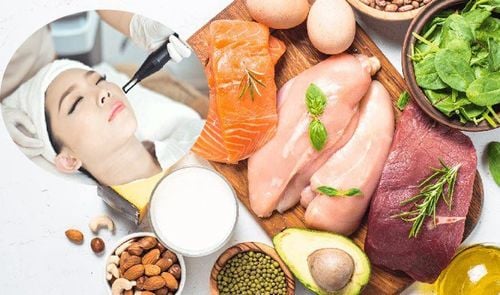
When the skin has hyperpigmentation issues such as melasma, freckles, sunspots, and hyperpigmentation, diet can play a role in treatment. One cause of hyperpigmentation in most cases is cellular stress. When skin cells are stressed due to exposure, hormonal imbalances, and infections, following a diet that is good for skin health can help reduce the impact of these factors.
2. The Process of Building a Diet to Treat Melasma and Freckles
Can diet affect the skin and the appearance of melasma and freckles? These are questions that many people with hyperpigmentation wonder about.
The answer is yes. For a good reason, the skin is considered the largest organ in the body - it covers all the other parts inside. When you eat, a large amount of nutrients nourishes the skin cells. This means that if you consume nutrient-poor foods, your skin will receive low-quality nutrition for growth and recovery. Similarly, nutrient-rich foods high in vitamins, zinc, calcium, magnesium, and manganese will provide the skin with high-quality energy to function. Therefore, diet plays an important role in overall skin health.
A healthy diet for bright skin is one that is full of nutrients beneficial to the skin. Beautiful skin must be made up of healthy, elastic, and vibrant skin cells continuously supplied with high-quality nutrition. If you maintain a nutrient-deficient diet, your skin cells will soon be starved and start to dull, age, and lose vitality. Some of the best foods for smooth, glowing skin are green vegetables, fatty fish like salmon, strawberries, broccoli, and citrus fruits rich in vitamin C.
When the skin has hyperpigmentation issues such as melasma, freckles, sunspots, and hyperpigmentation, diet can play a role in treatment. One cause of hyperpigmentation in most cases is cellular stress. When skin cells are stressed due to exposure, hormonal imbalances, and infections, following a diet that is good for skin health can help reduce the impact of these factors.
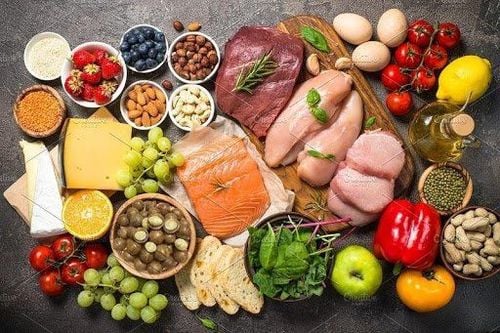
Step 1
Consult a dermatologist about your melasma and freckles condition.
The doctor may request blood tests to check for nutritional deficiencies and poor liver function that could cause this condition.
Additionally, melasma can also be a side effect of a medication you are taking. Ask your doctor to confirm or rule this out.
Step 2
Choose foods rich in folate because melasma can also be caused by a deficiency in folate or folic acid. Low levels of this B vitamin can occur in pregnant women or those with an inadequate diet. Citrus fruits, green vegetables, and whole grains are suitable choices to supplement folate or folic acid. The doctor may also prescribe folic acid supplements.
Step 3
Balance the amount of copper in your diet. High levels of this mineral can be indicated in melasma. Copper promotes melanin production in the skin, and high levels can cause excess pigmentation. If you are taking a multivitamin that contains copper, do not take additional copper supplements. Do not exceed the recommended daily intake of 900 mcg of copper for adults, 1,000 mcg for pregnant women, and 1,300 mcg for breastfeeding mothers. To reduce excess copper, eat foods high in vitamin C and iron or take these nutrient supplements.
Step 4
Increase the consumption of foods rich in vitamins C and E. These antioxidant nutrients help repair sun damage to the skin that can cause melasma. These vitamins are found in foods such as citrus fruits, kiwi, nuts, almonds, brightly colored vegetables, and fish.

3. Food Choices to Treat Melasma and Freckles
Eat Fresh Foods
Junk food, processed foods, factory-produced foods, artificial sweeteners, flavor enhancers, food colorings, and chemical additives are not considered part of a natural diet. Meanwhile, eating fresh, natural, and nutritious foods is the way to treat melasma.
Eating fresh foods means consuming fruits, vegetables, whole grains, legumes, nuts, meat, fish, eggs, herbs, spices, etc. The food purchased needs to be fresh, requiring self-preparation and the use of quality ingredients.
Avoiding inflammatory foods means avoiding junk food, fast food, processed foods, canned drinks, and ingredients because anything that comes out of a bag, can, box, jar, or bottle can be processed. If the food is made in a factory, it will have various chemicals added to enhance flavor or preserve the food, which should not be eaten.
Avoid Inflammatory Drinks
Not only processed foods cause inflammation, stimulate pigmentation, and provide very little nutrition to the body, but many drinks do as well. Therefore, besides wondering what to eat to treat melasma or freckles, if you want to truly heal from within, you should not drink soda, packaged fruit juices, energy drinks, sweetened tea, and should also avoid alcohol and coffee.
None of these drinks benefit the skin. Meanwhile, if you want to drink for your health, drink water or simple homemade herbal tea or fresh vegetable juice.
Stop Eating Allergenic Foods
When you eat food that can cause allergies or is difficult to digest, the body will automatically cause inflammation, which can also contribute to increased pigmentation. Therefore, when considering what to eat to treat melasma and freckles, eliminate foods suspected of causing allergies such as eggs, milk and dairy products, soy and soy products, wheat gluten, seafood, and peanuts.
Reduce Carbs
For many people, melasma and freckles are triggered by hormones. When there are too many carbs in the diet, it causes hormonal imbalances and leads to hyperpigmentation.
If you have melasma during pregnancy, breastfeeding, taking birth control pills, hormone replacement therapy, or if melasma worsens at different times of the menstrual cycle, actively controlling carbohydrates in your diet can be helpful to treat melasma and freckles.
Here are some examples of processed foods high in carbs: sugar and syrups, flour, baked goods (bread, cakes, crackers, bagels, muffins, cookies, etc.), pasta and noodles, chips and crisps, candies and desserts, cereals, soda or alcohol, fruit drinks, sweetened drinks (energy drinks, sweetened tea, sweetened coffee drinks, etc.).
However, there are still sources of fresh foods high in carbs to consider cutting down: sweet fruits (mangoes, papayas, bananas, grapes, pineapples, etc.), legumes (chickpeas, lentils, black beans, pinto beans, etc.), starchy vegetables (potatoes, beets, carrots, pumpkins, squash, sweet potatoes, etc.).

Supplement with Antioxidants
Along with eliminating all processed foods and junk food from your diet while reducing carbohydrate intake, another important aspect of what to eat to treat melasma and freckles is ensuring you consume enough antioxidants daily.
Antioxidants help reduce inflammation, enhance cell repair, and can protect skin cells from free radical damage. In today's age, with frequent exposure to pollution and strong UV rays, the skin needs more protection from within. At this time, antioxidants are a key component from a natural diet that can protect the skin from the inside out.
Antioxidants that should be included in your diet: Vitamin C, E, A, resveratrol, flavonoids, beta-carotene, lycopene, lutein, and selenium. Examples of antioxidant-rich foods include:
- Berries (blueberries, cranberries, raspberries, blackberries, pomegranates, dragon fruit, kiwi, etc.)
- Beans (kidney beans, black beans, pinto beans, cacao beans, etc.)
- Vegetables (tomatoes, onions, artichokes, broccoli, red cabbage, beets, etc.)
- Leafy greens and herbs (kale, spinach, bok choy, artichokes, cilantro, thyme, basil, etc.)
- Spices (turmeric, cinnamon, cloves, cumin, ginger, etc.)
- Nuts (pecans, Brazil nuts, walnuts, hazelnuts, etc.)
Additionally, the easiest way to know if a food is high in antioxidants is by observing its color. The darker the color (like wild blueberries, spinach, or turmeric), the more antioxidants it contains. Therefore, if you eat a variety of colorful foods at each meal, you are consuming many antioxidant-rich foods.
In summary, melasma and freckles are caused by the overproduction of melanin in the skin. Therefore, knowing what to eat to treat melasma or freckles as mentioned above, a diet of fresh foods rich in antioxidants, limiting starches, and avoiding inflammatory and irritating foods can help reduce skin pigmentation, resulting in brighter and more radiant skin.
Please dial HOTLINE for more information or register for an appointment HERE. Download MyVinmec app to make appointments faster and to manage your bookings easily.
